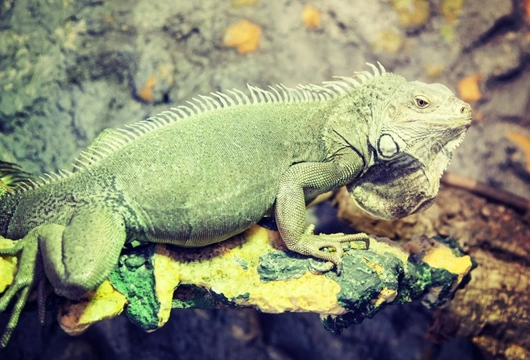
Six essentials your reptile terrarium needs before you bring your pet home
If you have decided to start keeping reptiles, congratulations! Reptiles of all types, from turtles to lizards to popular snakes like the rat snake can make for very rewarding and generally low maintenance pets, providing that you are prepared to learn about them properly and attend to all of their needs once you get them!
Reptiles are incomparable to other pets such as cats, dogs and fish when it comes to their specific care and housing needs, and the term “reptile” itself is a very large heading, which encompasses a multitude of different types of animals, all with their own unique requirements.
Once you have decided what type of reptile you wish to keep and have sourced an appropriate terrarium for them, you will then need to spend some time and money sourcing all of the supplies that you need to set up your new tank with, before you buy your pet and bring them home.
Picking the right size of terrarium tank is one of the first challenges, and a good start involves planning for the adult size that your pet will reach, and buying a tank that will be able to accommodate for them. As well as the volume of the tank itself, you should also take into account the shape of the tank; some reptiles don’t climb much and need a lot of floor space, while others need a tank that is deep rather than wide, as they like to climb about!
Once you have found your perfect tank and situated it in your home ready for your new pet, make sure you have all of the following supplies to hand and installed before you head off to collect your reptile!
Appropriate lighting
The vast majority of pet reptiles need two different types of lighting in their terrarium, as the lights don’t only allow you to view your pet, but also perform an important role in helping your reptile to produce vitamin D and metabolise calcium.
Reptiles need both a heat bulb to warm the enclosure, and a UVB bulb to support vitamin production. Take care when buying your UV light that you pick a UVB bulb, not a UVA one, which provides light only. This is more important for reptiles that are more active during the day than those that move around at night, as nocturnal reptiles get most of their vitamin D from their prey.
Lighting cycles for most reptile tanks should be based on a twelve hour on, twelve hour off cycle.
Heat lamps
Most reptiles need a heat lamp to maintain a warm enough temperature in the terrarium, and for some reptiles, a heat lamp is sufficient without a UVB lamp, if they are nocturnal and so, do not need vitamin D from their lighting.
It is important to look into the heat and lighting requirements for the pet you will be buying, as these can vary considerably between species. Alternatives to heat lamps include heated tape, heat pads or heated rocks, but heated rocks are less popular these days as their temperatures tend to be unstable, and they may become too hot.
Thermometers
In order to assess the temperature of your pet’s terrarium and ensure that it suits their requirements, you will need some thermometers! It is wise to use two or three thermometers in the terrarium rather than just one, in order to get a realistic average temperature reading, and monitor the differences in temperature across different parts of the tank.
Reptiles are very sensitive to temperature anomalies that fall outside of the norm of their comfortable ranges, and using thermometers to monitor the temperature can help you to make small adjustments to the heat that will keep your pet comfortable and thriving.
Hygrometer
A hygrometer is a tool to measure humidity, or the amount of moisture present in the air. Different types of reptiles have vastly differing humidity requirements, with some benefitting from a dry, arid landscape, while others need a lot of moisture. Using your hygrometer in combination with a mister will help you to monitor and adjust the humidity level in your terrarium.
An appropriate substrate
There are a whole range of different types of substrate materials for terrariums, including moss, coconut husks, bark and soil. However, just because the packaging says it is designed for reptiles does not mean that any given product will be the right pick for your own pet, as again, different types of reptiles have vastly varied substrate needs.
Some reptiles need a dry, fine substrate that mimics the deserts that they come from, while others will need a damp or moist substrate such as moss.
Decoration
Terrarium decorations are not simply designed to be pretty and make your terrarium look good, but also to provide hiding places and variety for your pets. Some reptiles need to climb, while others need caves and hidey holes to feel secure, and so you should put a lot of thought into furnishing your tank with your pet in mind, and not just what looks appealing to you!



